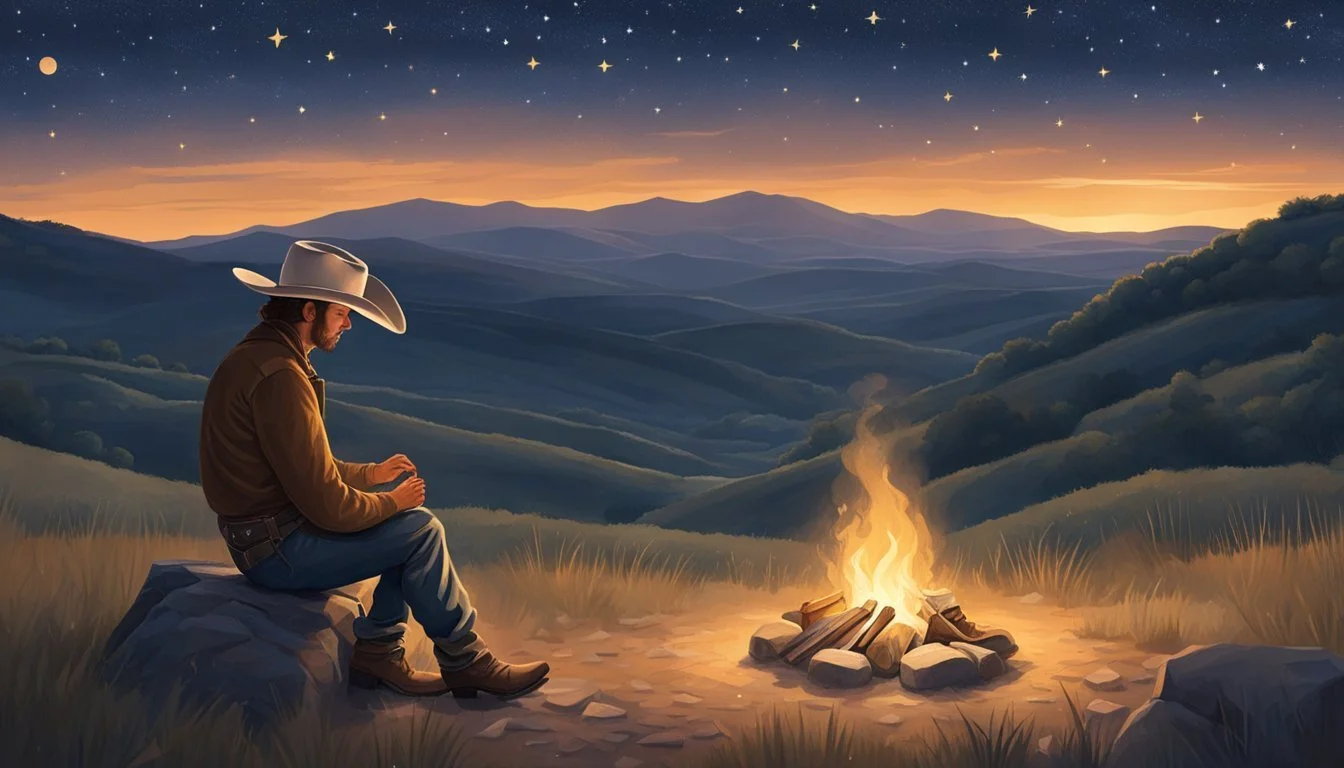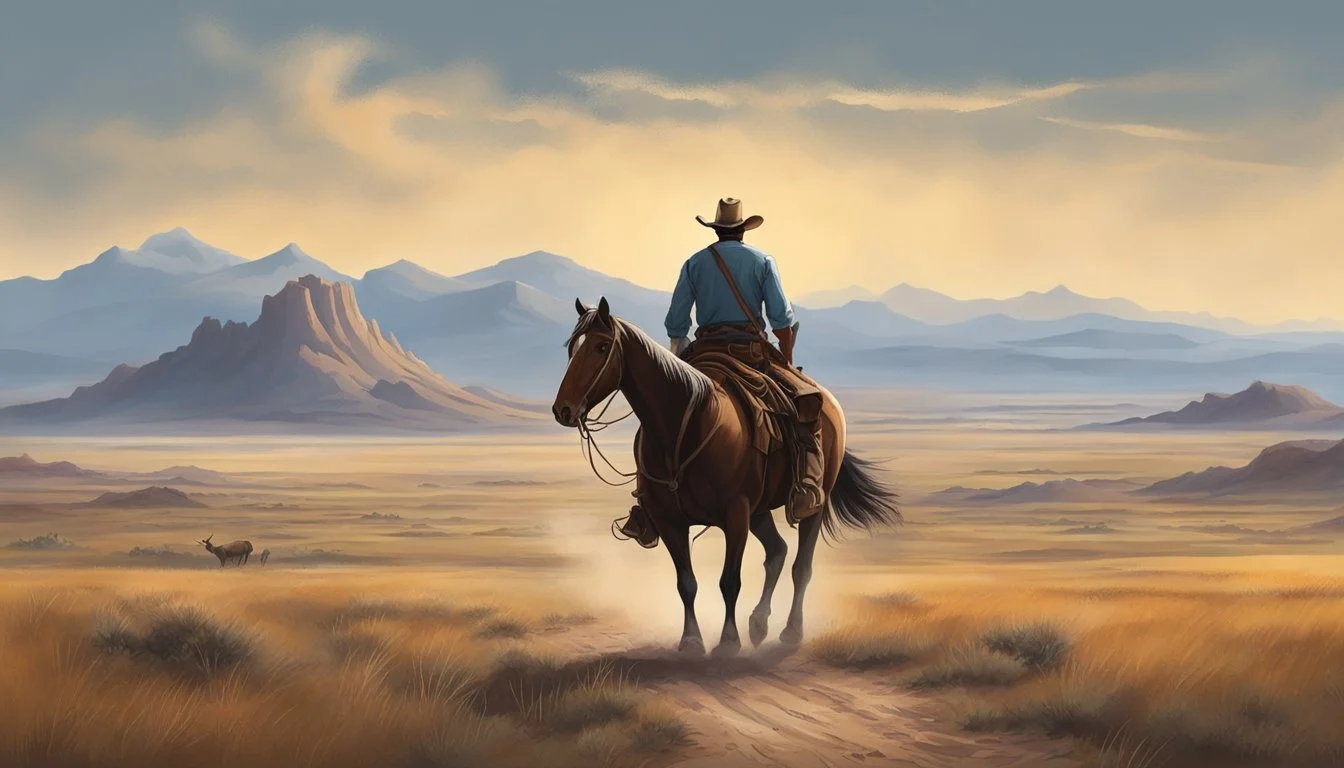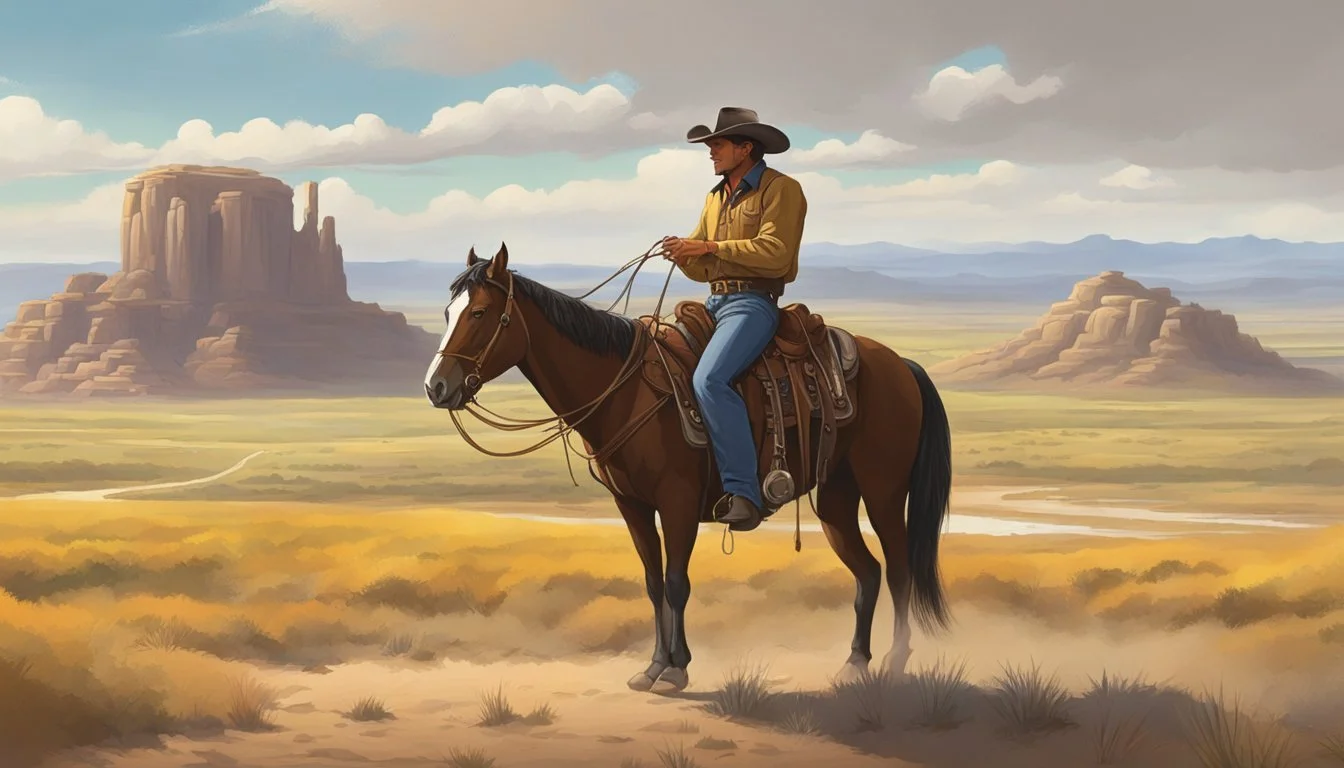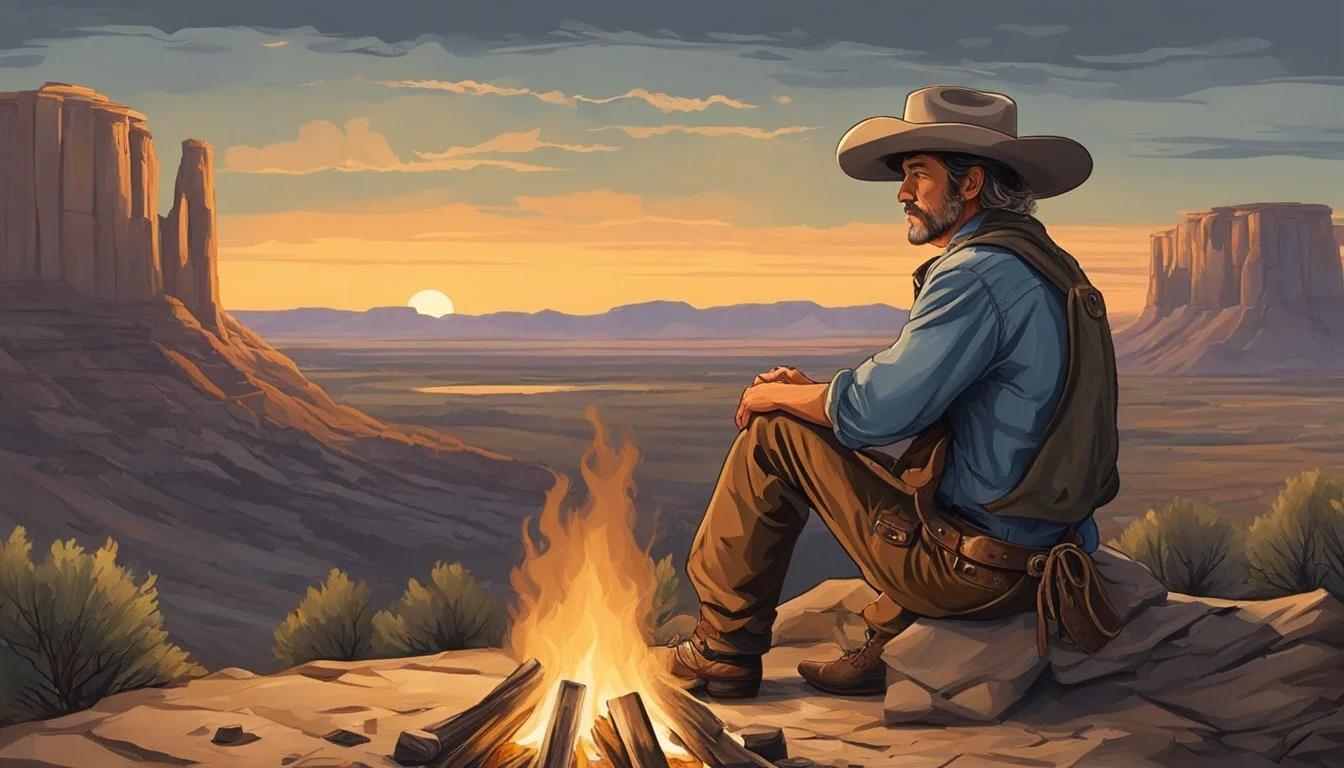Exploring the Richness of Texas Cowboy Poetry and Ballads
Cultural Insights and Traditions
Texas has long been a land steeped in the traditions of ranching and cowboy culture, a place where the American West's rugged history and spirit endure. Among the most distinctive forms of expression to arise from this heritage is cowboy poetry, an art form that traces the joys and hardships of the cowboy's way of life. It's a genre deeply rooted in Texas's identity, where the narratives of long days, vast landscapes, and the camaraderie of the cattle drive are immortalized through verse and rhyme.
Cowboy poetry often reflects the daily experiences and emotions of those who worked the land and cattle, serving as an homage to Texas's ranching legacy. It originated as a form of storytelling among cowboys on long cattle drives, eventually evolving into a broader tradition that includes both written and oral compositions. These poetic works not only honor the trials and tribulations of past generations but also keep the cowboy spirit alive in modern times, giving voice to contemporary ranchers and their experiences.
The gatherings and festivals dedicated to cowboy poetry and music, such as those in Elko, Nevada, attest to the enduring popularity of this cultural art form. Featuring performances of classic compositions alongside new creations, these events cultivate an appreciation for the rich narrative tapestry of Texas cowboy life. Cowboy poetry captures the essence of the American West, offering a lyrical perspective on a way of life that continues to shape and inspire the lore of Texas and beyond.
The Roots of Cowboy Poetry
Cowboy poetry, with its distinctive blend of history, lore, and the hard realities of ranching life, offers an authentic glimpse into the cowboy's soul. This form of storytelling has been nurtured by generations of cowboys, with benchmark contributions from figures like Jack Thorp and John Lomax, and is deeply rooted in the oral tradition of the American West.
Influences and Evolution
The earliest cowboy poets drew inspiration from their rigorous lives on the cattle trails and their close bonds with nature and livestock. Jack Thorp, a pioneer in collecting and preserving these works, published the first book of cowboy songs, providing a foundation for others to build upon. The work of John Lomax, who was instrumental in preserving this folk heritage, further cemented the cultural significance of cowboy poetry. Their collections have not only safeguarded the legacy of cowboy ballads and poetry but also traced their evolution from the open ranges to the modern day.
Influences: Daily life, nature, the trials of cattle drives
Evolution:
Early 19th century: Oral recitations on the range
1907: Jack Thorp's "Songs of the Cowboys" publication
20th century: John Lomax's documentation and archival work
Prominent Cowboy Poets and Their Legacy
Cowboy poetry's legacy is enshrined in the works of individuals like Larry McWhorter who offered verse that resonated with the cowboy way of life, grounded in personal and historical experiences of the American West. The authenticity and the spirited tradition of these poets have ensured that the essence of Texas ranching life continues to be celebrated and preserved.
Larry McWhorter: Texan poet whose works reflect personal experiences
Frankie McWhorter: Fiddler whose storytelling influenced his son Larry's works
The Tradition of Oral Storytelling
Oral storytelling, the bedrock of cowboy poetry, encapsulates the camaraderie and shared experiences of cowboys around campfires after long, arduous days of working cattle. This age-old practice is more than entertainment; it's a means of preserving history, values, and a way of life that might otherwise have faded into obscurity.
Medium: Oral recitation, shared memories, and songs
Preservation: Gatherings, recordings, and transcriptions by figures such as Lomax
Themes and Styles in Cowboy Poetry
Cowboy poetry is characterized by its celebration of the Western lifestyle and its distinct use of form. It typically blends narrative with a classic rhyme scheme to bring the cultural experiences of cowboys to the forefront of American poetry.
Life on the Open Range
Stories of life on the open range stand at the heart of cowboy poetry. Tales are spun around the daily rituals and challenges faced by those living the cowboy lifestyle. These poems often include vivid imagery of:
Cattle herding and the trials of driving livestock across expansive landscapes.
Horses, not just as animals, but as steadfast companions essential to ranch work.
Experiences of camaraderie and loneliness, reflecting the social dynamics of the range.
Cowboy Values and the Cowboy Code
Cowboy poetry frequently pays homage to cowboy values and the cowboy code. An ode to the ethical framework within which cowboys operate, these poems encapsulate:
Honesty
Courage
Loyalty
Respect for the land and animals
The rhyme scheme in these poems often mirrors the straightforward, unadorned ethos of cowboy life, reinforcing the themes of integrity and honor.
Nature and the Landscape
The Western landscape is not merely a backdrop in cowboy poetry but rather a character in its own right. Through various poetic devices, these ballads explore:
The majesty and harshness of the terrain.
A relationship with the environment that is rooted in both nostalgia and present-day reality.
Nature as a source of sustenance and challenge, reflecting the deep bond between the land and those who work it.
The Art of Cowboy Balladry
The tradition of cowboy balladry extends beyond mere entertainment, serving as a historical ledger and a vessel for the timeless tales of the Texas cowboy experience.
Music and Rhythm in Cowboy Songs
The art of cowboy balladry is underpinned by distinctive music and rhythm that resonates with the experiences of the range. These songs often feature a steady, lilting beat akin to the pace of a horse's trot, which made them suitable companions during long cattle drives. Rooted in oral tradition, the melodies and chord progressions tend to be simple, making them easily memorable and readily passed on from one generation to the next.
Famous Cowboy Ballads and Their Impact
Several famous cowboy ballads have had a profound impact on the cultural heritage of Texas and the American West. For instance, “The Old Chisholm Trail” recounts the toils of driving cattle over the infamous trail, while “Streets of Laredo” tells a poignant tale of a dying cowboy. These ballads have become cornerstones of cowboy music, each telling a story that encapsulates the cowboy spirit and ethos. They've been preserved and celebrated at events like the annual Texas Cowboy Poetry Gathering, ensuring their legacy endures.
Cowboy Poetry in Modern Times
Despite its historical roots, cowboy poetry remains a vibrant form of expression that celebrates the life and culture of the Texas cowboy through modern festivals and preservation efforts.
Contemporary Cowboy Poets and Festivals
Contemporary cowboy poets have taken the mantle from their predecessors, weaving tales of the Texas ranching life into verse that resonates with audiences today. Festivals are pivotal in keeping this tradition alive, with gatherings like the Texas Cowboy Poetry Gathering offering a platform for both seasoned and emerging poets. Another notable event is the National Cowboy Poetry Gathering in Elko, Nevada, which has been a cornerstone for cowboy poets since Hal Cannon founded it in 1985 with support from the Western Folklife Center and the National Endowment for the Arts.
List of Notable Cowboy Poetry Festivals:
Texas Cowboy Poetry Gathering: Celebrates Texas's unique cowboy heritage.
National Cowboy Poetry Gathering: A week-long celebration featuring poets, musicians, and artists from the cowboy culture.
Cultural Significance and Preservation
The significance of cowboy poetry extends beyond entertainment; it is a cultural artifact that preserves the essence of the cowboy way of life. Its themes of camaraderie, daily struggles, and the beauty of the open range capture the spirit of the American West. Organizations and audiences alike play a critical role in preserving this tradition. The Western Folklife Center has been instrumental in ensuring the art form's survival, securing funding, and providing educational resources that foster a greater appreciation for cowboy poetry and its relevance in contemporary society.
Representations of Cowboys in Media
Cowboys have been an iconic symbol in media, often blending the lines between mythology and historical reality. Media portrayals have shaped the public perception of cowboys significantly, creating a lens through which these figures are viewed.
Cowboy Myth vs. Historical Reality
The cowboy myth presents these figures as rugged, lone heroes riding across the American West, a narrative that has been reiterated in countless films, books, and photographs. This idealized image owes much to historical figures like Theodore Roosevelt, who himself embodied the romanticized cowboy spirit of the late nineteenth and early twentieth centuries. His leadership and life amplified the cowboy as an American icon, the steward of frontier virtues.
Contrasting with the myth, historical reality tells a nuanced tale. The actual working cowboy was part of a complex economic system, deeply connected with the labor of cattle ranching in Texas. Cowboys were diverse, coming from various racial and ethnic backgrounds, including Hispanic vaqueros who greatly influenced cowboy practices. While the myth often celebrates individualism, cowboys typically worked in teams and faced rough, sometimes mundane, realities on the trail.
In modern media, this myth continues to evolve. Visual representations in contemporary photography, film, and video explore both the mythical cowboy image and its real-life counterpart, engaging audiences with a blend of historical reverence and cultural critique. As such, the portrayal of these figures remains a thriving part of Texas economy, society, and culture, reflecting a more complex identity beyond the myth.
Cowboys Around the World
The concept of the cowboy is firmly rooted in global culture, with the American cowboy persona exerting a significant influence, while cultural exchanges with the Vaqueros of Spain and Mexico enrich the cowboy heritage.
American Cowboy Influence Globally
The image of the American cowboy has become an iconic symbol recognized worldwide. They epitomize the frontier spirit, characterized by rugged individualism and a connection to nature. The influence of American cowboys has reached far beyond the borders of the United States. It has inspired similar cultures and practices in other countries. In Australia, for example, bush poetry has grown from the same seeds as cowboy poetry, mirroring the American tradition with its themes of rural life and challenges of the outback.
Influence in Pop Culture: Countless movies, songs, and books have portrayed the American cowboy, helping to disseminate the cowboy image globally.
Australian Bush Poetry: Similar to American cowboy ballads, it celebrates the life and struggles unique to the Australian bush, with icons like Banjo Paterson leading the genre.
Cultural Exchange: Vaqueros and Beyond
Before the American cowboy, there were vaqueros—the horsemen and cattle herders of Spanish Mexico whose skills and traditions lay the groundwork for the cowboy way of life. The vaqueros' legacy is evident in the riding techniques, clothing, and even the language (such as "rodeo" and "lasso") commonly associated with American cowboys. Furthermore, black cowboys played a significant part in shaping the West, a fact that has been historically underrepresented but is crucial to the complete narrative of cowboy culture.
Vaqueros' Legacy:
Riding Gear: The use of saddles, spurs, and chaps
Lingo: Words adopted into cowboy vocabulary
Black Cowboys:
Role: An estimated one in four cowboys was African American, contributing significantly to cowboy culture and cattle herding.
Recognition: Greater efforts in historical research are unearthing these stories, ensuring a more inclusive account of cowboy history.
The traditions established by vaqueros continue to be honored and practiced in modern cowboy culture, and the contributions of black cowboys are gaining recognition as integral to the authenticity of the Western narrative.
Influence on Other Art Forms
Texas cowboy poetry and ballads, with their rich narrative and evocative imagery, have influenced various other art forms, creating a cultural tapestry that goes beyond the spoken word and song.
The Cross-Pollination of Genres
The interplay between Texas cowboy poetry and the wider sphere of American music has led to interesting fusions and inspirations. Western music, particularly, has drawn heavily from the narrative style of cowboy poetry, embedding its tales of life on the range into the rhythms and melodies familiar to the genre. Songs of the cattle trail and cow camp often find their echoes in the modern tunes of Western bands.
As cowboy poetry includes elements of storytelling, blues and spirituals—genres deeply rooted in the expression of emotion and experience—share a thematic kinship with these ballads. The laments of hardship, tales of wanderlust, and the celebration of a hard day’s work are themes that cowboy poetry and blues particularly align on.
Furthermore, the dramatic tales of cattle drives and the unpredictability of ranch life, such as encounters with a stampede, have inspired cinematic scores and theatrical representations—immersing audiences in the visceral experiences of cowboy culture. Through these art forms, the ethos of Texas cowboys has been immortalized, influencing artists across different mediums to reflect the wild, untamed spirit they represent.
Exploring Regional Variations
Exploring the richness of Texas cowboy poetry and ballads reveals distinct regional variations that are reflective of the diverse landscapes and cowboy cultures across Texas and beyond.
The Diverse Tales of Texas and Beyond
In Texas, cowboy poetry often takes its roots from the state’s varied regions. West Texas, with its expansive Great Plains, inspires narratives of endless skies and rugged independence. The city of Lubbock has produced its share of poets whose work echoes the area's windswept prairies. Moving southward, Alpine is known for ballads that encapsulate the Big Bend's isolated beauty and the unique challenges faced by cowboys in such terrain.
By contrast, in Fort Worth, the historical nexus for ranching, the cowboy poetry frequently pays homage to the cowboys' grit required to drive cattle long distances. Here, the cowboy poetry is not just recited but celebrated at annual events that draw visitors from across the country.
Black cowboy poets add another layer of narrative, often recounting tales that weave together the African American experience with the typical cowboy life. Their contributions to cowboy poetry are integral in understanding the full spectrum of cowboy culture.
Cowboy Poetry Across the American States
Beyond Texas, cowboy poetry exhibits significant variations that reflect the environmental and cultural diversity of the American cowboy. In Montana, for example, poems often speak of the Rocky Mountains and vast open ranchlands, with cowboys grappling with harsh winters and the camaraderie formed in isolated conditions.
In the Great Plains that span multiple states, the cowboy poetry captures the vastness of the heartland and the close ties between cowboy life and the natural world.
Across these regions, cowboy poetry and ballads act as an oral history that preserves the myths, realities, and values of the cowboy way of life. They articulate not just a regional experience but a national cowboy identity — one that continues to evolve but always remembers the tales of the past.
Personal Narratives and Anecdotes
Personal narratives and anecdotes form the heart of Texas cowboy poetry, providing a window into the daily life and humor prevalent in ranch culture. These stories often emerge from the working cowboy’s experiences and evolve into cherished oral histories, frequently recounted around the campfire.
Cowboy Stories and Reflections
Campfire storytelling is a central tradition where cowboys converge to share their experiences. These gatherings turn into impromptu performances, with ranch hands turning into performers as they recite tales punctuated by wit and wisdom gained from years on the range.
Waddie Mitchell, Bruce Kiskaddon, and Wallace McRae stand tall among the poets who have contributed to the cowboy poetry scene with their personal narratives rich in the details of cowboy life.
Their stories often delve into the humor and irony of everyday occurrences—in the case of McRae, even musing on reincarnation in his well-known "Reincarnation," a poem that glimpses at a cowboy's afterlife.
They preserve the history and legends of famous ranches such as the XIT and the King Ranch through vivid storytelling.
It is through these personal recounts and expressive ballads that the essence of the working cowboy's life is immortalized, continuing a legacy of oral tradition that captures the spirit of Texas ranching life.







